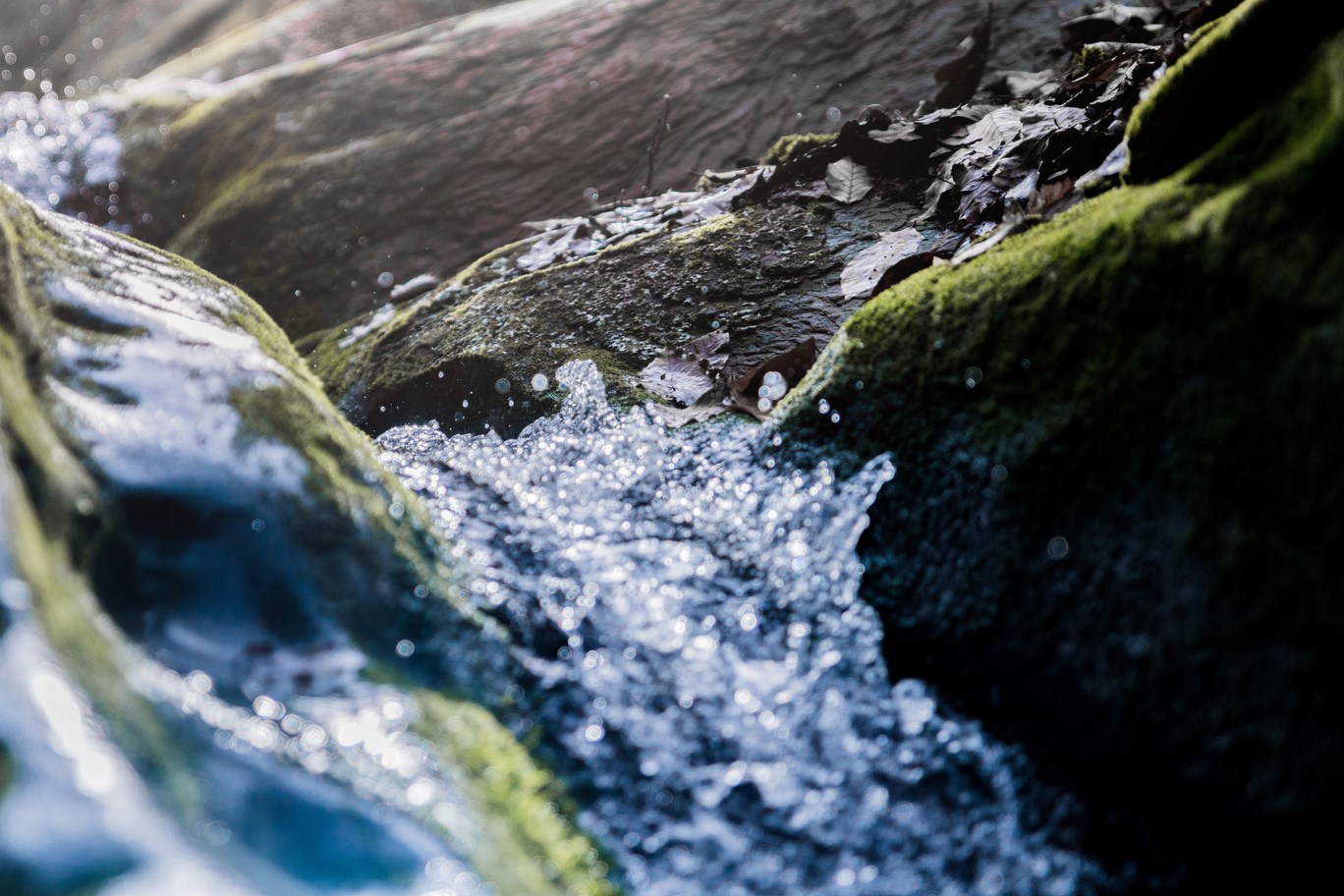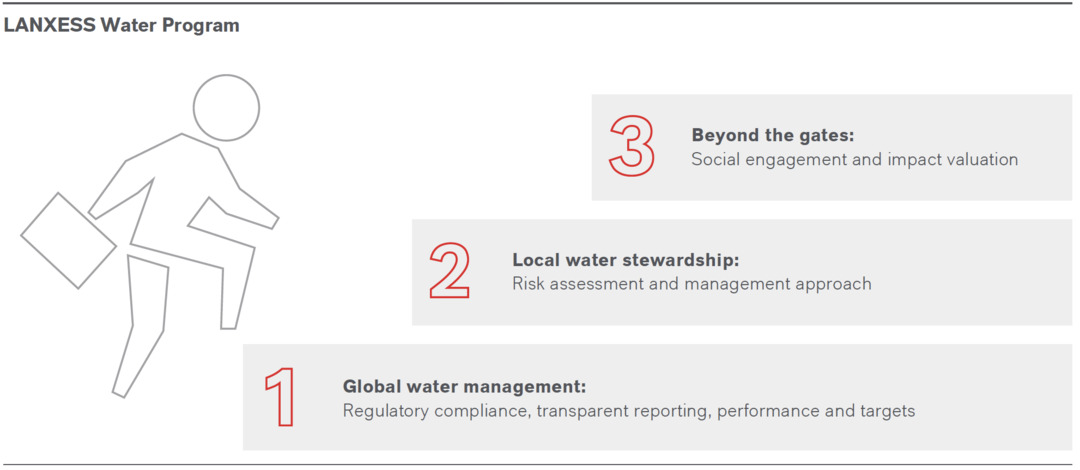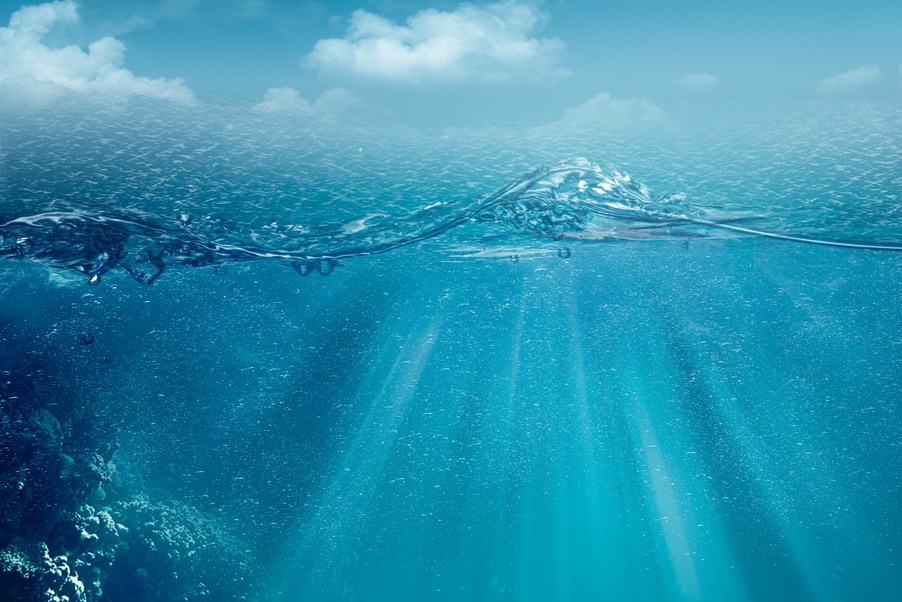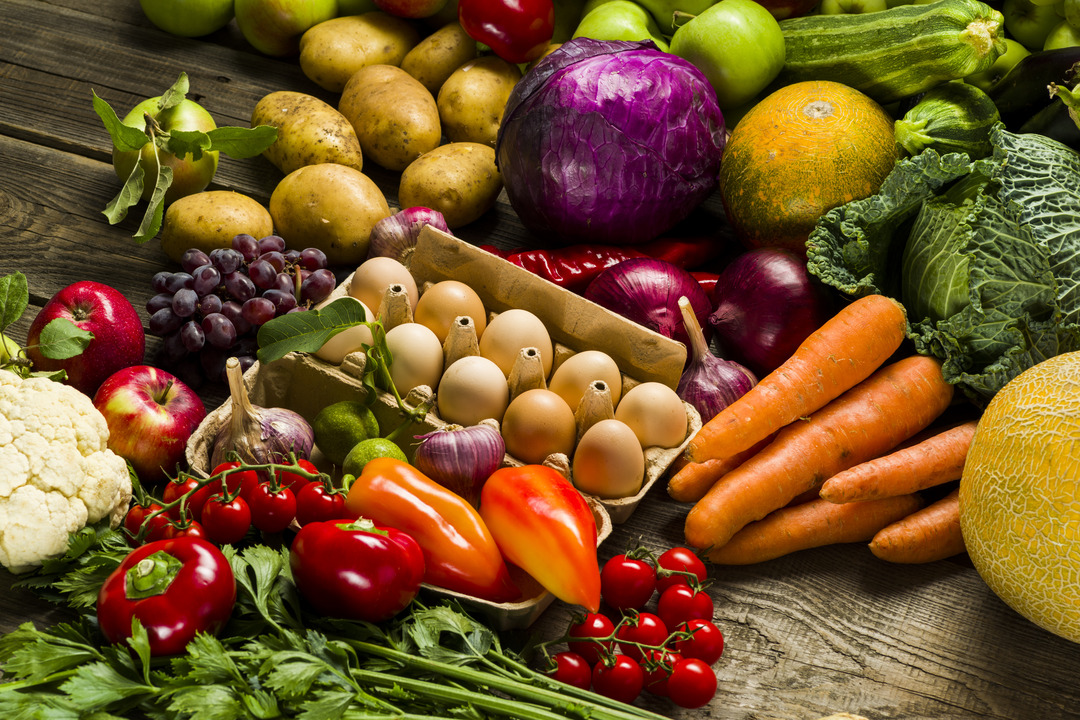
LANXESS Water Program
Access to water and sanitary facilities are a fundamental human right. Water availability and quality are global challenges that we can and must address locally. We are therefore committed to the responsible use of water. In our own business activities and beyond, we use our products to advance the United Nation’s Sustainable Development Goal 6 (SDG 6): “clean water and sanitation for all.”
In order to further drive our dedication to the protection of water as a resource, we launched our global LANXESS Water Program in 2020. In addition to the global efficiency targets for water consumption and total organic carbon (TOC) in wastewater, the program primarily aims to make improvements at the LANXESS water risk sites.
One of the most important indicators in discussions around water is water stress, calculated as the ratio of total annual water withdrawal to total renewable water reserves. In areas with high water stress, there is also competition between the users of water sources.
Our annual analysis of all LANXESS production sites using the WRI Aqueduct Tool showed that – taking all portfolio changes into account – 13 of our production sites are in water-stress areas. These sites account for around 2% of our total water withdrawal. Around 90% of our water withdrawal takes place in areas with low water stress.
We have developed an extensive water risk analysis, which we update every two years, in order to build upon the assessment and serve as a basis for our LANXESS Water Program. This analysis is based on a total of ten factors such as water stress, water withdrawal and other risks and combines internal and external data and information. The main indicators of water risk are the updated water stress score we developed (average of current and future water stress) as well as the specific water withdrawal per metric ton of a product. We identified a total of four locations as water risk sites: Jhagadia and Nagda, India; Latina, Italy; and Qingdao, China.
With a reduction of 31%, we exceeded our target to reduce water withdrawal at water risk sites by 15% by the end of 2023 (base year: 2019) Water withdrawal has been reduced significantly, for example by a technical optimization of the cooling towers in Latina and by various water saving measures in Qingdao. At the two Indian sites, Jhagadia and Nagda, rainwater projects were implemented with the local community. Local water stewardship programs were implemented at all water risk sites.
The products of our Liquid Purification Technologies business unit in particular make a major contribution. For example, the Lewatit® ion exchange resin is used in the processing and reuse of process water and removes unwanted substances. LANXESS plans to further expand the promising business with ion exchange resins.
 LANXESS
LANXESS




